Una storia di abbandono. Cause, conseguenze, trasformazioni
Abstract
Il fenomeno dell’abbandono oggi riguarda principalmente insediamenti “minori”, ubicati in aree disagiate o fragili a cui si affiancano “frammenti” urbani e industriali che hanno concluso il proprio ciclo vitale o hanno perso la propria funzione, diventando incompatibili con il sistema socio-economico. Le cause più evidenti sono naturali e antropiche, traumatiche e graduali, che fanno leva sulla fragilità del territorio, spesso accresciuta da incuria e scarsa manutenzione, in un processo spiraliforme in cui l’abbandono aumenta l’incuria, l’incuria aumenta l’abbandono; ma anche su quella di un tessuto socio-economico tradizionale, che non riesce a star dietro alla velocità dei processi delle cosiddette aree avanzate.
Spopolamento e abbandono non sono fenomeni del nostro tempo. In ogni epoca e ad ogni latitudine i territori sono stati sono stati via via abitati, abbandonati e poi riabitati, secondo un ciclo vitale a volte naturale, a volte innaturalmente accelerato da scelte politiche. Tuttavia, appare evidente, guardando alla storia dei luoghi, come i singoli eventi non siano stati quasi mai causa esclusiva di abbandono: le comunità hanno spesso affrontato e superato il disastro, trovando in se stesse e nel proprio patrimonio identitario gli stimoli e le soluzioni per una possibile ripresa. I problemi nascono invece, quando all’evento si somma un’azione umana, un intervento poco rispettoso, poco lungimirante o addirittura dannoso o anche una semplice inazione. Sono azioni politiche che innescano direttamente o indirettamente processi di abbandono, ove non si riconnettano alle maglie storiche e non siano strutturati in relazione alle esigenze e alle impronte identitarie dei luoghi e delle collettività.
History of Abandonment. Reasons, Consequences, Transformations
The phenomenon of abandonment today mainly concerns small villages, located in disadvantaged or fragile areas, but also urban and industrial "fragments", which have concluded their life cycle or have lost their function, becoming incompatible with the socio-economic system. The most obvious causes are natural and anthropic, traumatic and gradual, and depend on the fragility of the territory, often increased by neglect and poor maintenance, in a spiral process in which abandonment increases neglect, neglect increases abandonment; but they also depend on the traditional socio-economic system, which cannot keep up with the speed of processes in the so-called advanced areas. Depopulation and abandonment are not phenomena of our time. In every age and at every latitude territories have been gradually inhabited, abandoned and then re-inhabited, according to a life cycle that is sometimes natural, sometimes unnaturally accelerated by political choices. However, it is evident, looking at the history of places, that single events have almost never been the sole cause of abandonment: often communities have faced and overcome a disaster, finding in themselves the stimuli and solutions for a possible recovery. Problems arise, however, when human action is added to the event, a disrespectful, short-sighted intervention or even simple inaction. These are political actions that directly or indirectly trigger processes of abandonment, where they do not follow the history, needs and identity of places and communities.
Parole chiave
Full Text
PDFDOI: https://doi.org/10.14633/AHR209
Refback
- Non ci sono refbacks, per ora.
Copyright (c) 2020 Giuseppina Scamardì

This work is licensed under a Creative Commons Attribution-NonCommercial 4.0 International License.
........................................................................................................................................................................................................................................................................................................................................................
ArcHistoR è una rivista open access e peer reviewed (double blind), di Storia dell’architettura e Restauro, pubblicata dall’Università Mediterranea di Reggio Calabria. La rivista ha cadenza semestrale. È una rivista di Classe A (ANVUR) per l’Area 08 - Ingegneria civile ed Architettura, settori C1, D1, E1, E2, F1.
Comitato scientifico internazionale
Maria Dolores Antigüedad del Castillo-Olivares (Universidad Nacional de Educación a Distancia de España), Monica Butzek (Kunsthistorisches Institut in Florenz), Jean-François Cabestan (Université Paris 1 - Panthéon Sorbonne), Alicia Cámara Muñoz (Universidad Nacional de Educación a Distancia de España), David Friedman (Massachussets Institute of Technology), Alexandre Gady (Université Paris-IV-Sorbonne), Jörg Garms (Universität Wien), Miles Glenndinning (Scottish Centre for Conservation Studies, University of Edinburgh), Mark Wilson Jones (University of Bath), Loughlin Kealy (University College Dublin), Paulo Lourenço (Department of Civil Engineering, University of Minho), David Marshall (University of Melbourne), Werner Oechslin (ETH, Zurich, Stiftung Bibliothek Werner Oechslin, Einsiedeln), José Luis Sancho (Dirección de Conservación de Bienes Histórico-Artísticos, Palacio Real, Madrid), Dmitrij O. Švidkovskij (Moscow Architectural Institute, MARCHI)
Comitato direttivo
Tommaso Manfredi (direttore responsabile), Giuseppina Scamardì (direttore editoriale), Antonello Alici, Salvatore Di Liello, Fabrizio Di Marco, Paolo Faccio, Mariacristina Giambruno, Bruno Mussari, Annunziata Maria Oteri, Francesca Passalacqua, Edoardo Piccoli, Renata Prescia, Nino Sulfaro, Fabio Todesco, Guglielmo Villa
........................................................................................................................................................................................................................................................................................................................................................
Laboratorio CROSS. Storia dell'architettura e Restauro

ISSN 2384-8898

This work is licensed under a Creative Commons Attribution-NonCommercial 2.0 Generic License.

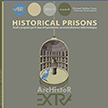
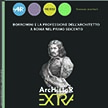
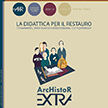

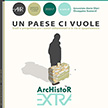
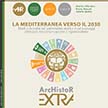
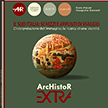
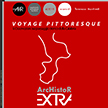
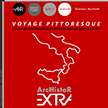
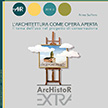


_2.jpg)



